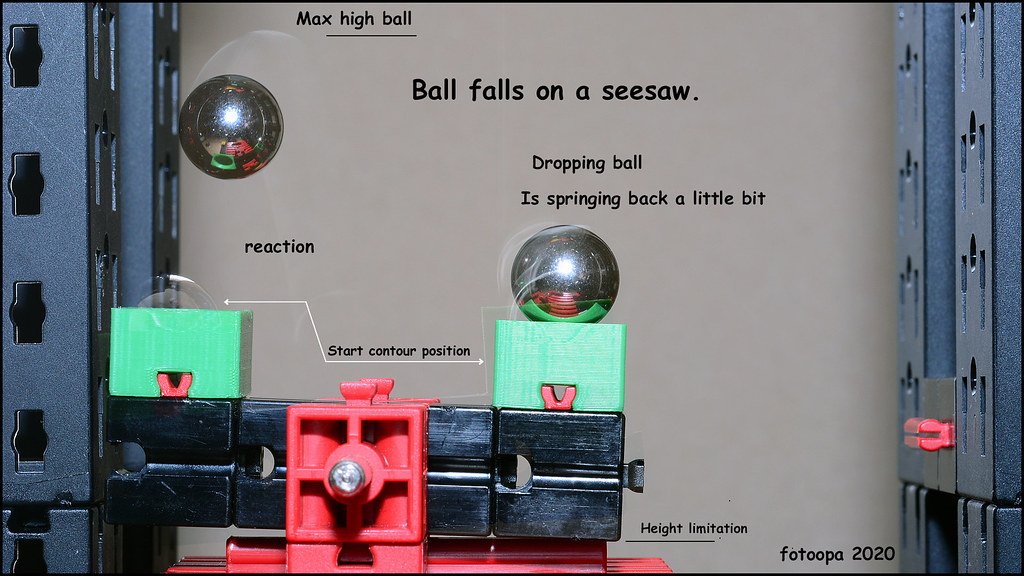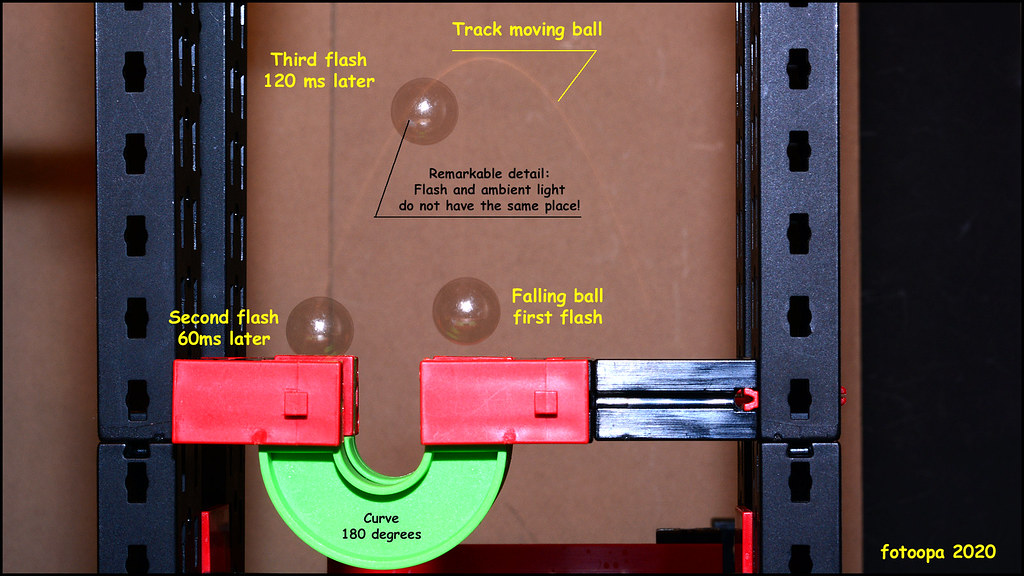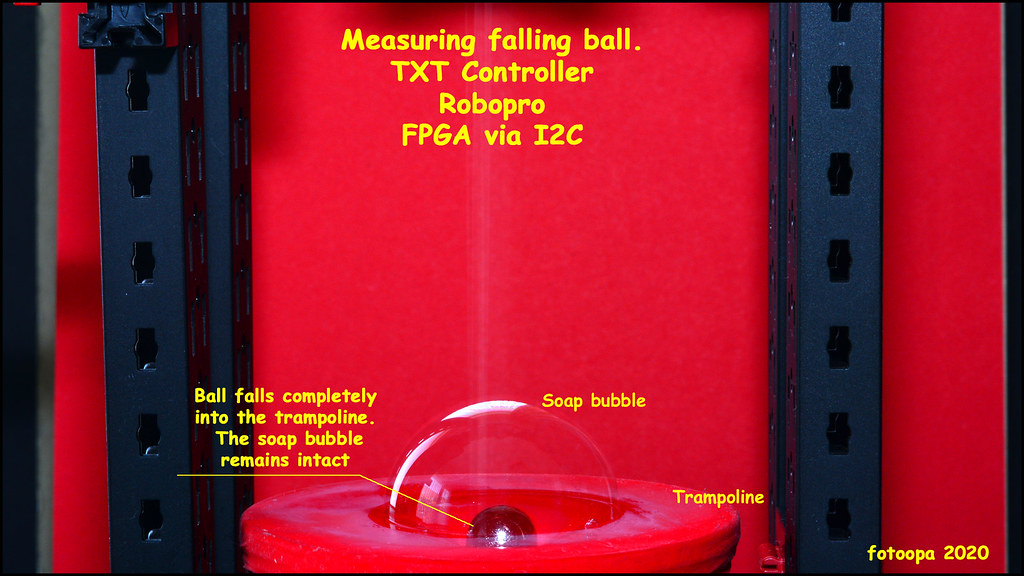As promised, I have an LED flash connected.

HD on Flickr:
https://www.flickr.com/photos/fotoopa_hs/49886915696
The TXT controller of Fischertechnik controls the whole thing. The program used is the Robopro. The motor that brings the balls is controlled by the TXT, the camera is controlled by the FPGA. The necessary parameters are transferred via I2C. On the PC everything is nicely adjustable and controllable.
The camera is the Nikon D7100 and together with the software ControlMyNikon, the images are transferred directly to the PC where they can be seen online in full resolution. I use 2 UHD screens next to each other, one screen shows your settings of Robopro TXT, the other ControlMyNikon with all camera settings and the incoming image.
The resultat:

HD Flickr:
https://www.flickr.com/photos/fotoopa_hs/49887229407
This picture contains a lot of information if you take into account the supplied data. The contrast of the balls is a bit lower because your 4 X flash is within the same image. The first ball you see has already covered a distance of almost 110 msec. This time is adjustable in the Robopro program. The higher this time the deeper the ball will be visible in the picture. A flash repeat is performed 3 times with a delay of 8.2 msec each time. The flash time is 60 usec each time. Because the ball accelerates during the fall you can clearly see that the distance between the first flash and the next flashes is different. At the last flash, the ball is already bouncing back through the trampoline As a result, the distance between flash3 and flash4 has just decreased You can also see that the ball has just sunk into the trampoline at flash4 So you can see that with these kinds of shots a lot of phenomena can be explained.
I also took a screen shot of my 2 UHD screens:
Link to Flickr very high resolution image:
https://www.flickr.com/photos/fotoopa_hs/49886915626
On Flickr, however, you can zoom in and shift the image. This is a screen dump of my 2 UDH screens together, resulting in a total image of 7680x2160 pixels. Here I have a realtime overview of the running programs. I see the settings and the live images coming in in real time.
The PC is a Win10 system I9 at 3.6GHz 32Gb ram and 5TB of SSD memory. The TXT Controller and the D7100 camera are connected via USB for real-time data transfer. This picture is quite large considering the original data.
These tests provide a lot of information. That is also the purpose of my tests. All these tests require some knowledge in many areas, such as photography, mechanics, physics, electronics, programming, lighting, etc. This is precisely the pleasant thing to experiment with.
Frans.














